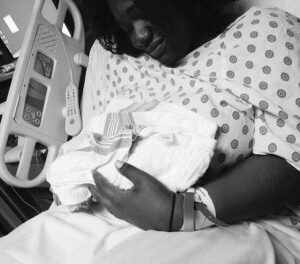by Evan Bollinger
It can happen when you least expect it.
You’re out and about, at a public place, or around friends and family, and then it hits. The feeling, you know all too well. And while you may try to do your darndest to prevent it or address it secretly, sometimes, it seems like no matter what you do, it just doesn’t work.
For people with Crohn’s disease, incontinence is no joke. Embarrassing and challenging, this condition occurs due to Crohn’s impacts on the gastrointestinal system. While issues such as abdominal pain, diarrhea, and weight loss are manageable, fecal incontinence feels like a different animal altogether.
Sometimes, nothing is more isolating and uncomfortable than losing control over your bowel movements.
But here’s the good news. Although this may feel like an insurmountable challenge, there are many things you can do to live more comfortably and confidently with Crohn’s.
Let’s cover five you can start doing TODAY.
1. Restroom Locator Apps
This may sound silly, but it’s actually quite useful. Yes, there are restroom locator apps, and yes, they can quickly find clean, accessible restrooms, particularly when you’re in unfamiliar areas.
Are you on the go? Are you running errands? On vacation or simply traveling to a new destination? Stuck in rush hour traffic and looking for a quick detour? Cutting-edge restroom apps can help you when you need it most.
- Flush: Offers a map of public restrooms, whether free and paid, in your vicinity. You’ll even find reviews for the cleanest!
- Sit or Squat: A very useful app that not only locates nearby restrooms but also rates them on cleanliness like Flush.
- Google Maps: You may not have known this, but Google Maps enables you to search for nearby restrooms at shopping centers, gas stations, and restaurants. Simply search for “restroom” in Google Maps and you’ll get an entire list of nearby lavatories.
Thanks to apps like those above, Crohn’s patients can rest a little easier, knowing they have it all right at their fingertips. When you need a restroom urgently in a new environment, consider locator apps first and foremost.
2. Emergency Kit
Even if you can locate a restroom nearby, sometimes it’s already too late.
This is where having an emergency kit on hand can make all the difference. Think of this kit as a collection of all possible items you could need to ensure you address the situation ASAP. After all, when incontinence occurs, you want to be able to manage the embarrassing situation as quickly as possible.
For starters, make sure you have wet wipes. These can help you clean up quickly if you can’t get to the bathroom in time. Then there’s spare underwear. Grab some disposable or cloth underwear and make sure to have it in your kit at all times.
It’s also a good idea to have a few plastic bags on hand for any soiled clothing or wipes. This will make disposing of waste simple and proper. And speaking of ‘cleaning up,’ you’re certainly going to want some hand sanitizer. No matter what you do, always consider having a change of clothes nearby. In some cases, absorbent pads may be a good option. Protective pads or adult diapers are a great way to manage incontinence discreetly and effectively.
3. Protective Underwear
We just touched briefly on protective underwear options for adults, but let’s go a little deeper. For one, it’s important to ease any stigmas or stereotypes. You don’t need to feel embarrassed or self-conscious about wearing ‘adult diapers.’ In fact, they’re designed perfectly to be discreet and comfortable, so it’s not as if anybody will ever know.
When considering protective underwear, know your needs. If your incontinence is significant and ongoing, adult diapers are the best option. If your incontinence is less severe, absorbent briefs/pads are a second option. These can be worn with normal clothing and are best for people with lower absorbency needs.
Finally, you have leak-proof underwear. Many brands such as Depend, Tena, and Tranquility are designed specifically for people with gastrointestinal conditions. They look and feel like normal underwear, just with the added benefit of built-in absorbency material.
With protective underwear, you won’t have to worry about sudden embarrassing accidents or wet clothing. You’ll be comfortable and dry without a fuss!
4. Private Relief Areas
Sometimes, a crowded public bathroom just won’t cut it.
When incontinence strikes, you want peace and quiet. You want a place where you can tend to your situation without feeling rushed or self-conscious. This is where private relief areas come in.
Whenever you enter a new area, do ‘scouting.’ Look out for potential areas where you can go in case incontinence occurs. Some places have so-called family bathrooms, which are larger and more private, even with locks for security. Many of these accessible restrooms are less crowded and more spacious, allowing you that extra feeling of security you crave.
When it comes to public spaces, consider the features of parks, libraries, restaurants, and cafes. Many parks and libraries have quiet restrooms that are more detached and remote. When it comes to restaurants and cafes, many well-kept establishments will have clean, private restrooms.
Simply ask the staff and find the space right for you!
5. Plan Fluid Intake
Last but not least is managing your fluid intake. Because dehydration can worsen the symptoms of Crohn’s, it’s important that you find your balance. After all, too much fluid can also contribute to bathroom visits and incontinence.
So plan ahead. Talk with your doctor and have a ready-to-go kit, or at least easy access to hydration when needed. Remember, you don’t need to drink it all at once. Sip throughout the day to balance out your hydration. And make sure you know what triggers you. Is it alcohol, caffeine, or very hot/cold drinks? Track your drinking and learn which beverages cause the most problems. In some cases, electrolyte drinks may be your best option, as the symptoms of Crohn’s often lead to imbalances.
And finally, don’t forget to hydrate before physical exertion. If you can manage your fluid intake carefully and consistently, you may notice a dramatic decrease in incontinence issues.
By utilizing the steps in this article, you’ll be well on your way to better controlling that not-so-fun little problem associated with Crohn’s!











